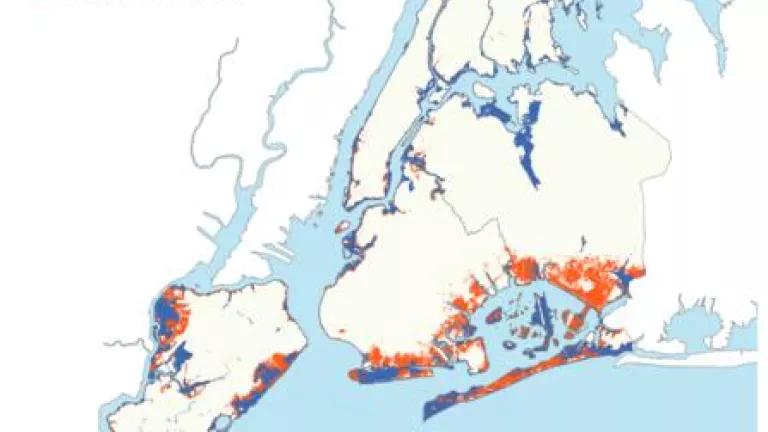NYC Will Get Flood Maps that Consider Climate Impacts

When Superstorm Sandy struck the east coast in October 2012, large areas were inundated that were not considered at high risk of flooding, at least according to woefully out-of-date flood maps. As a result, hundreds of thousands of people in New York and New Jersey, who never suspected that floodwaters might reach their doors, suffered damage or complete destruction of their homes.
Two major factors led to this tragic discrepancy. First, many flood maps in New York and New Jersey were outdated. New York City’s flood maps, for example, hadn’t been updated since 1983, nearly three decades before Sandy made landfall. Second, even if the maps had been up to date, FEMA’s flood maps do not account for future sea level rise – an omission that becomes more dangerous in light of a newly released study indicating increased frequency of Sandy-like flooding due to climate change.
New flood maps were in the process of being created at the time Sandy struck and were completed in 2014. They showed a much larger area was at risk of flooding, but New York City appealed the maps, arguing that they placed too many properties in the floodplain.
To settle that appeal, New York City and FEMA announced this week that two new sets of flood maps will be created that should result in better information about current and future flood risks. One set of maps will reflect the current flood risks facing the region, and the other will show how sea level rise and the likelihood of climate-supercharged storms like Sandy will greatly increase the risk of flooding in the future.
The work announced by FEMA and New York City is an example of steps we need to take to help prepare communities for the ever-escalating risks and vulnerabilities they face as a result of climate change. The maps that show current flood risks will be used to determine how much a property owner will pay for coverage under the National Flood Insurance Program (NFIP). The forward-looking maps that reflect the impacts of climate change, including sea level rise and the potential for larger and more frequent storms in the future, will be used for deciding where and what to build.
The new maps created by FEMA and New York City could be a model for the rest of the nation. A committee of experts convened by FEMA last year recommended such an approach for the entire NFIP. NRDC has also been calling for FEMA to begin integrating climate impacts into flood maps. We hope the efforts of FEMA and New York City are the first of many to make climate-smart flood maps for all the nation’s coastlines to better protect our frontline communities.

